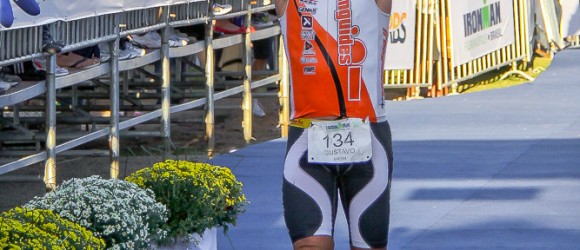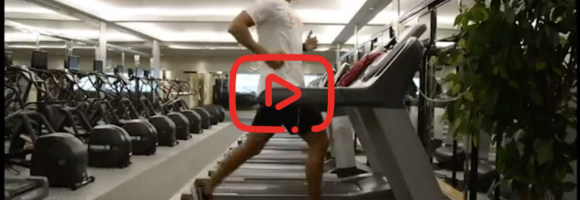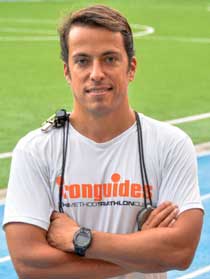There are so many ways to ruin a perfect performance on the weeks leading up to the race. Learn from others athlete’s mistakes, don’t repeat the same mistakes described below.
1) Tapering too early and too much:
I’ve written in a past article, why marathon tapering is different than the “conventional” tapering we keep hearing about. To sum it up, marathon, especially at the age group level, is all about fitness and not speed like the events that were the origin for taper (short course track or road) for that reason if you start cutting back on training 3-4 weeks out of race day, you will get to the start line feeling super fresh, but also very unfit!
Marathon taper should start no earlier than 2 weeks out and no later than 1 week, for most of the athletes. And you should cut down first on intensity, then on volume and last on workout frequency.
2) Letting the body shut down on race week:
Stay active! Stay loose! Once you get to race week, is a matter of getting a rest but not letting your systems shut down or you will feel just stale on race day. Do a lot of 20 to 40 minutes easy sessions, with a few fast strides here and there at race pace and race technique, that way you keep your muscles firing and familiar with the work that will come on race day, but keep those strides short so that won’t be long to take anything out of you for race day!
Avoid a day off the day before the race, two days out is better, do a little touch (10 minutes) the day before, just to get your rested legs going again.
3) Mental fatigue from race week hype:
Keep the hype under control. I often recommend my athletes to get to the race venue as late as possible, by doing that I know that the damage done to those who are easily caught by the hype, will be limited to a few days. If you can book your accommodation a few miles away from the race area, that really helps too.
Another great way to switch your mind off the event for a good few hours before race day is when you have a family member or friend with you. Although supportive (since that person is there with you anyways!), I’m sure that a conversation at dinner about something else than running, would be quite a relief for that person, this will help to put your mind at ease, relax and save your mental energy for the last 6 miles, where you will need to squeeze out every bit of mental strength to keep putting o foot in front of the other.
4) Physical fatigue from race week:
How many times have you gone to bed the night before a race and thought “ouch, my legs are tired, I shouldn’t have walked the expo for that long today”? Once again walking around the expo, standing around and talking to your buddies for hours is also part of the experience, but you should avoid those situations, especially if you are trying to improve your own PB or to perform at your best on race day.
Get one period of one day, best if 2 days out of race day to do all the socializing and shopping you want. For example if the race is on a Sunday, spend Friday morning at the expo, buy all the souvenirs you have, take as many photos you want, and catch up with all your friends on their training and racing expectations. Than this is it, avoid going back there.
5) Radical changes at your diet or sleep habits:
If you go to bed every day at mid night, is very likely you won’t be able to sleep by nine at the night before a marathon race. You will only frustrate yourself and make things even worse. For most of the athletes, if you get enough rest from a reduced training load and good sleep nights for the whole week before the race, the actual night before, doesn’t make a big difference. Same rule with your diet. Keep it simple, eat the same breakfast (or meal) you usually do before your training sessions. Diet alone won’t make you any faster on race day, but a different diet can sure cause your problems. The carbo-loading usually happens on race week anyways since you do get less training than the usual in the last few days before a race, so if you keep eating what you usually do, you will be eating more calories anyways, there is no reason to over eat the days before a race.
Some coffee drinkers try to stay away from coffee/tea on race week (or even weeks before that) to decrease caffeine tolerance, then once you have a double espresso on race morning the boost would be stronger. This can be a terrible idea since the lack of coffee will make you feel terrible, which can result in a worse than normal training session, feeling overly tired and might even play up with your confidence, which can result in bad choices. If coffee makes you feel good, keep drinking it up to race morning!
Stay fit, stay calm, tune out the noise, organize yourself and race fast!
Coach Vinnie Santana
ironguides is the leading Lifestyle Facilitation company for athletes of all abilities. We provide coaching and training services, plans and programs, as well training education, health and fitness products to help you learn and live a healthy lifestyle. Come get fit with one of our monthly training subscriptions, event-specific training plans, coaching services, or a triathlon training camp in an exotic location! ironguides also provides Corporate Health services including Corporate Triathlons, Healthy Living retreats and speaking engagements. At ironguides, your best is our business!
Train with ironguides!
Personalized Online Coaching: Starting at USD190/month
Monthly Training plans (for all levels, or focused on one discipline): Only USD39/months
Event based training plans:
Sprint Distance (USD45 for 8-week plan)
Olympic Distance (USD65 for 12 week plan)
Half Ironman (R$95 for 16-week plan)
Ironman (USD145 for 20-week plan)
X-Terra (USD65 for 12-week plan)
Running Plans (10k, 21k and 42k – starting at USD40)





Recent Comments